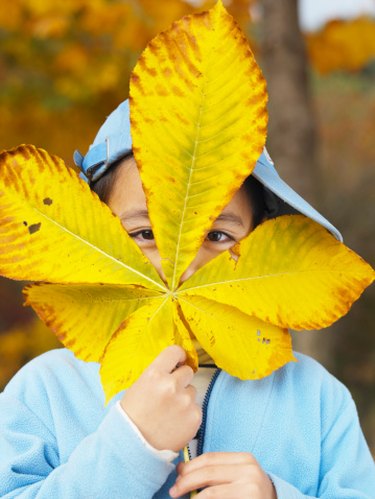Written by Sarah John and published on https://www.hunker.com/
Yellowing leaves can be caused by a number of factors, and typically signal that your plant is in some kind of distress. Unfortunately, there are dozens of potential causes of this one problematic symptom, and narrowing it down can be challenging.
When a tree’s leaves turn yellow or drop off in summer, it could be due to a number of causes. Sometimes, it’s perfectly normal and nothing to worry about. But, in many cases, summer leaf yellowing is caused by insects or diseases, environmental factors, or things you’ve done (or not done!) to your tree, all of which can result in dieback and failure to thrive.
My Tree Leaves Are Turning Yellow

Yellowing of tree leaves may occur for several reasons.
When a tree’s leaves turn yellow, it’s often an early indication of a pest problem or disease associated with fungi or bacteria. However, it may also be the result of a vitamin or mineral deficiency. Address color changes as soon as possible. Treating for pests or providing additional nutrients may be the answer in restoring the tree’s health.
Chlorosis
Chlorosis is an abiotic illness commonly found in several areas of the United States. Unlike other problems, it is not caused by a disease or pest. The yellow leaves are the result of low chlorophyll production. Chlorophyll is what gives the green color to leaves and allows the use of sunlight for food and energy production. The most common cause for this is iron deficiency, usually treated by adding iron supplements to the soil. This problem may also be caused by overwatering, root damage or damage caused at the trunk. Early on, leaves will turn a yellow-green color, and become more yellow as the illness progresses. If left untreated, veins and leaf edges may turn brown and die. Once this stage occurs, tree growth usually stops and branches begin to die.
Mineral Deficiency
Most types of trees require at least 16 elements to function properly. Among these are iron, nitrogen and magnesium, and to a lesser extent manganese and boron. If these elements are not available in large-enough quantities naturally, add them for the well-being of the tree. If left unchecked, the leaves become brittle and turn yellow, the fruit dies, along with the branches. Slight differences are noticeable in the yellowing pattern and change depending on which element is lacking. Nitrogen-poor leaves develop a mottled pattern, versus yellowing bases of leaves with a magnesium deficiency. Each of these problems is easily treated by adding supplements to the soil.
Aphids
Aphids are common garden pests and may affect just about every tree species and region in the country. These insects tend to do the most damage to young, newly planted trees; handle these pests quickly. One of the earliest signs of an aphid problem is a yellowing and curling of leaves. Once this occurs, a good dose of pesticides can get rid of the bugs. Since they tend to be persistent, more than one round may be necessary. Some growers plan ahead by introducing lady bugs to their new trees. These insects are beneficial to the tree since they are natural predators of aphids.
Citrus Greening
Usually carried by the Asian citrus psyllid, citrus greening is a contagious disease that most often severely damages young citrus trees. This pest is a big problem across most of the southern United States, including parts of Texas, California and Florida, where a large number of citrus is grown. In the early stages of infection, leaves yellow and dry out. These effects move toward the major parts of the tree, including fruit and branches. Fruit becomes misshapen and bitter, and production stunted. If left untreated, the core of the tree will curve, with irreparable effects.
Original post here https://ift.tt/3yHKyy7.
from AAA Tree Lopping Ipswich https://ift.tt/2SrVpvr
via IFTTT
No comments:
Post a Comment